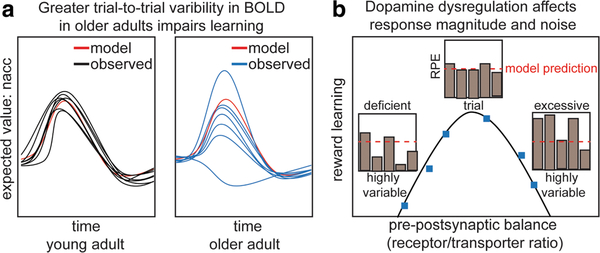Fig. 3.
Effects of dysregulated dopamine function on intraindividual variability. Data displayed in panels a–b are hypothetical and are presented to illustrate predictions. a Within-subject variability in the precision of dopaminergic responses may be associated with noisier representations of expected value in the nucleus accumbens (NAcc) and slower learning of cue-reward contingencies. A young adult may show consistent, accurate responses across trials (black), while an older adult may show increased variability (blue). b Dysregulation of presynaptic and postsynaptic balance may cause changes in the precision of reward prediction errors (RPEs) leading to greater within-subject trial-to-trial variability in dopaminergic responses. Subjects with greater dysregulation (ascending and descending arm of the inverted U) may show greater trial-to-trial variability. Subjects with relatively preserved dopamine receptors, but reduced transporters (descending arm) may show excessive responses, while subjects with reduced receptors and preserved transporters may show deficient responses. (Color figure online)

